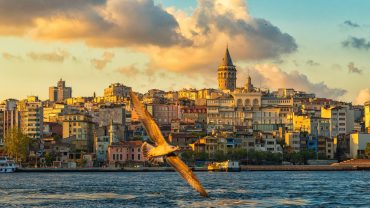
Muş (pronounced [mush]) is a city and the provincial capital of Muş Province in Turkey. The date of foundation of Mush is unknown, although a settlement is believed to have been around by the time of Menua, the king of Urartu (c. 800 BC), whose cuneiform inscription was found in the city’s vicinity. History Ancient and medieval During the Middle Ages, Mush was the center of the Taron region of Armenia. Its is first mentioned as a city in Armenian manuscripts of the 9th and 10th centuries. In the late 8th century Mush, along with the Taron region, came under control of the Armenian Bagratid (Bagratuni) dynasty, who reconquered it from the Arabs. Mush and the Taron region was captured and annexed to the Byzantine Empire in 969. After the 11th century, the town was ruled by Islamic dynasties such as the Ahlatshahs, Ayyubids, Ilkhanids and Kara Koyunlu. In the 10th-13th centuries Mush developed into a major city with an estimated population of 20 to 25 thousand people. In 1387 the central Asian ruler Timur crossed the area and apparently captured Mush town without a battle. Later the Akkoyunlu ruled the area and in the 16th the Ottomans took control over the town and region in the 16th century from the Persian Safavids. Mush remained part of the Ottoman Empire till the early 20th century and during these times retained a large Armenian population. In 1821 a Persian invasion reached Mush. Modern At the turn of the twentieth century, the city had around 20,000 inhabitants, of which 11,000 were Muslims, while 9,000 were Christian Armenians. According to the Catholic Encyclopedia (1913) the town had 27,000 inhabitants, of whom 13,300 were Muslims and 13,700 Armenians. According to the Encyclopædia Britannica (1911) the population was nearly equally divided between Kurds and Armenians. During the Armenian Genocide of 1915 the indigenous Armenian population of the region was exterminated. Over 140,000 Armenians of the Mush sanjak (living in 234 villages and towns) were targeted in June and July 1915. Military-aged Armenian men were conscripted to serve in World War I. The Armenian population was largely defenseless to these threats. The massacre of the Armenian population of the city of Mush came only after the surrounding villages were destroyed. The town was occupied during World War I by the forces of the Russian Empire in February 1916 and retaken by Ottoman troops on 30 April 1917. Demographics Population of the municipality of Muş numbers 72,774 according to a 2009 estimate. The province of Muş is one of the 13 provinces of Turkey with a Kurdish majority. Kurds make up the majority of the city’s population as well. The rest are Turks (mostly native, some are Balkan or Caucasian muhacirs), Arabs, and Crypto-Armenians, whose number is usually estimated to be between 2,000 and 3,000. Main sights The area of Muş has several ruined castles. Under the rule of the medieval Armenian dynasties monasteries and churches were built in localities near Mush such as the Arakelots Monastery, Surp Marineh Church, Mush, Surb Karapet Monastery most of which are now ruins. Under the rule of the Muslim dynasties, other type of buildings were built as well. There are mosques from the Ottoman and pre-Ottoman period which show influences of Seljuk architecture. Mosques like the Alaeddin Bey (18th century), Haci Seref (17th century), and Ulu Mosque (14th century). Caravanserais like the “Yıldızlı Han” (13th century) destroyed in 1916, the now almost completely ruined “Arslanli Han” and also bathhouse and fountain of Alaeddin Bey and tombs of Muslim saints. Climate Muş has a hot summer Mediterranean continental climate (Köppen climate classification Dsa) with freezing, snowy winters and hot, very dry and very sunny summers.





Comment (0)